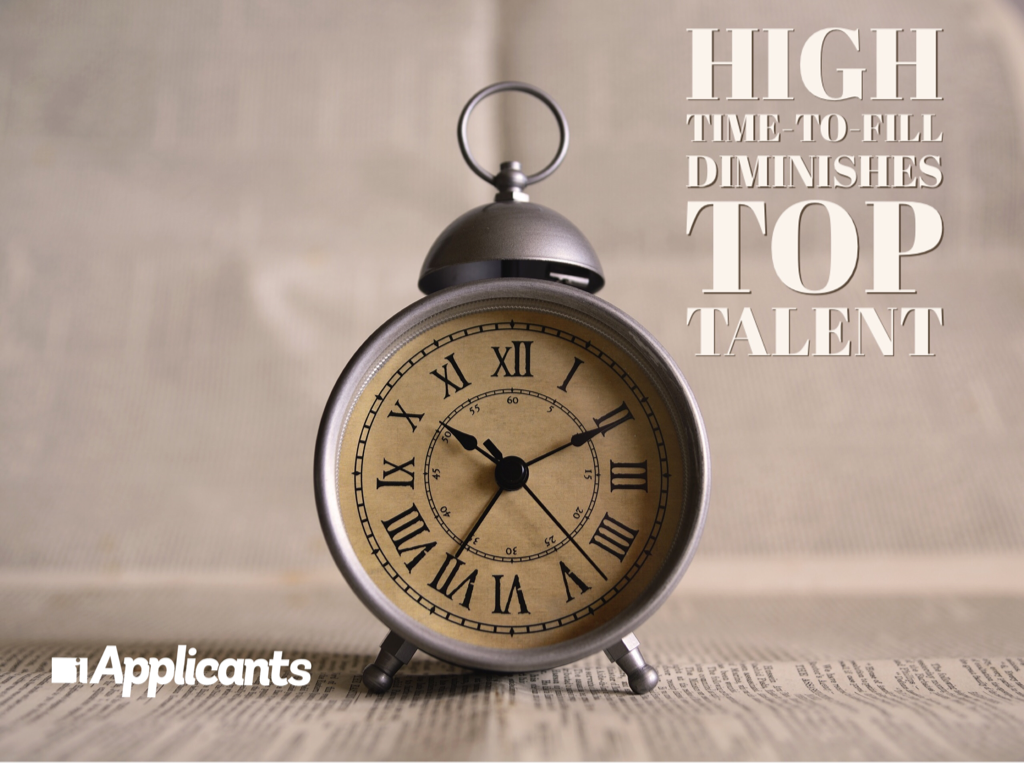As an HR professional, your individual success at your company is probably impacted by your time-to-fill numbers. The time-to-fill benchmark you’re used to seeing likely has a dollar sign attached to it because the more time it takes you to fill an empty seat at your organization, the bigger the financial investment imparts. For instance, high time-to-fill equals higher costs allocated to your recruiting budget as well as more money invested into the workforce used to support the hiring process. Perhaps more vital from a financial perspective than anything else though is the amount of revenue lost by an empty seat at the company – especially if that seat is a sales based or customer service type position.
As an employer, what you’re probably least likely to consider about the potential impact of high time-to-fill is actually not a concern from the perspective of your business, but rather, a concern from the perspective of your applicants. This point of view is often overlooked by corporate recruiters, and yet, its impact has the widest reach because it can easily sour a very strong and talented applicant pool.
In 2016 the time it takes to fill an empty seat at a company has jumped from 13 to 23 days.
In a recent article from the Wall Street Journal, it was found that time-to-fill numbers have increased significantly from a mere six years ago. In 2010, the average time-to-fill was 13 days. In 2016 the time it takes to fill an empty seat at a company has jumped to 23 days. This makes sense as employers try to nail down a more elaborate and effective hiring process due to the economy picking up again and online tools like hiring software enabling recruiters to screen applicants more productively.
Unfortunately, with so many tools now at our disposal to aid in the hiring process, it’s easy to feel overwhelmed and forget that not just any applicant tracking system will do. You want to choose a platform that helps you do your job more efficiently because making top talent wait too long by having a high time-to-fill will decrease your chances of landing that diamond in the rough employee and here’s why:
The best employees have a lot of employment options.
When you think about it, top performers are top performers because they work hard and are in high demand. If these individuals are unemployed, it’s unlikely that they’ll be unemployed for very long, so if your time-to-fill is on the high end, you could risk losing this superstar employee to another organization.
The same can be said for pretty much everyone in your talent pool except for those that are the most “desperate.” If you’ve been unemployed for a while and you’re desperate to land a job (regardless of what it is), then a company’s time-to-fill will have little bearing on your decision to work there because you need a job and you need it now. Having a lengthy time-to-fill can leave you with a dwindled and very desperate pool to choose from.
High time-to-fill breeds applicant discomfort.
Another fundamental point made by the WSJ article is that applicants who are made to participate in a never-ending process due to long time-to-fill endure a lot of emotional stress. This isn’t an immediate deal-breaker if the situation is handled in a way that reassures applicants and keeps them informed as the process unfolds.
Time-to-fill is more than just a number, it’s an investment from the company.
However, if your company has a lengthy time-to-fill process and you provide your applicants with little to no updates or string them along, then you’re doing yourself and your company a huge disservice. High quality applicants know their worth and will interpret a drawn out process without any updates on their status or where they stand as disrespectful and a testament to how the company is run in general. If you can’t whittle down your time-to-fill, then implement communication pathways regularly from recruiter to applicant to eliminate some of this uneasiness.
Time-to-fill is more than just a number, it’s an investment from the company. If you want to significantly lower your time-to-fill and skyrocket your credibility, we can help!
Try our free time-to-fill calculator today!




